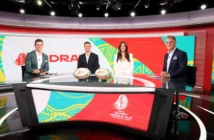Cambridge United’s tactical style is very unique.
Manager Mark Bonner has never had a set style of play. In his debut season in League Two, he adopted an ultra-attacking 4-4-2 diamond formation that saw the U’s finish as top scorers in the entire division on their way to winning promotion. There was less pressure to be defensively watertight given the lack of quality in the fourth tier, with Cambridge finishing second despite losing 14 of their 46 games, the tied most defeats in the top nine.
Of course, this would have to change in League One. Not only would Cambridge find themselves in one of the most top-heavy leagues in English football, but the departure of top goalscorer Paul Mullin would force Bonner to return to the drawing board.
The U’s have to play with much more caution in the third tier as Bonner abandoned the idea of playing with a front two, opting to use target-man, Joe Ironside, on his own in attack. This allowed him to add an extra body in midfield, helping his side to handle the intense pressure that the top teams in League One would put them under.
After achieving promotion, Cambridge had suddenly become a tiny fish in a gargantuan pond, but Bonner never disposed of his idea to play attractive, attack-minded football it just had to be done in a different way.
The last two weeks has been a perfect example of that. The U’s secured a stunning win against Newcastle United in the FA Cup, with goalkeeper Dimitar Mitov the clear Man of the Match despite Ironside’s heroics. This has been a running theme of Cambridge’s season so far, even if Mitov was not recognised for it before his clean sheet at St James’ Park.
In performance terms, Cambridge’s most recent victory, a 1-0 triumph over Lincoln City, is a trademark example of how they want to play.
The Imps battered the U’s in the reverse fixture, winning 5-1 at The Abbey in what remains Bonner’s heaviest defeat. The blame for the result landed firmly at his feet, with Cambridge’s naïve setup seeing them carved open at will by Michael Appleton’s men.
The trip to the LNER Stadium presented a unique opportunity. Cambridge would get to test themselves against one of the league’s out-of-form sides, despite their slight resurgence, while also getting to compare their improvement in League One in what would be Bonner’s 100th game in charge of his boyhood club.
While Lincoln were undoubtedly the better side across the 90 minutes, they spurned multiple clear-cut chances, allowing Ironside to pop up in stoppage time to score yet another winning goal.
Unlike the reverse fixture, Cambridge were not battered by the Imps and remained competitive while staying resilient at the back. Mitov was once again forced into multiple top-class saves with Liam Cullen’s effort somehow kept out by the Bulgarian goalkeeper to keep the scores level at the time.
Conversely, the U’s have averaged just 37% possession in their last four games in all competitions, but have ended up drawing one and winning three of them with Bonner’s current tactical style perfectly set up for this.
Cambridge have one of the lowest rates of passes per defensive action (PPDA) in the entire Football League, meaning that they very rarely press the opposition when on the ball. Instead, the U’s soak up the pressure, which they are able to do because of their impressive defensive record. Especially with Mitov in goal, it can feel like opponents can take as many shots as they want and not find the back of the net.
Similarly, the U’s are statistically a long ball team. Their defenders, primarily Jack Iredale, are astute long-range passers, aiming balls to the head of Ironside whenever they have a clear line of sight. The Australian left-back, who recently shifted over to become a dependable centre-back during an injury crisis, played 14 long balls against Lincoln, the most of any outfield player on the pitch.
Ironside receives the ball and holds it up, battling against even the most physical opposition centre-backs, in this case totally bullying Imps defender TJ Eyoma over the course of the game. He can then set up one of the supporting players, Adam May, Wes Hoolahan, James Brophy or Sam Smith, in what has become a trademark Cambridge counter-attacking style.
The U’s aren’t a defensive ‘hoofball’ side as many teams in League One and Two have been accused of becoming. They can play with break-neck speed on the ball, even if they do not waste any energy in pressing the opposition when off it.
Against the top teams in League One, of which there are many, this style works every time. When the U’s are the underdogs, they can play an attacking brand of football while also remaining defensively resilient by sitting off the opposition and relying on long-ball counter-attacks. Be it Newcastle or Lincoln, many teams will end up falling to the newly dubbed ‘Bonner-ball”.
The win at the LNER Stadium provided a benchmark to see how Cambridge have improved since September, both in terms of individual performances and tactically. Smith, who started both games against the Imps this season, told Prost International about his side’s development in between the two games.
“I think when we did play Lincoln at the start of the season, we played a 4-4-2, and straight away after that we realised we have to have three in midfield. If you look at all the big games we’ve played this year, we’ve been effective and been unlucky a lot.”
Perhaps the one doubt that lingers over Cambridge is their ability to perform when they are not the underdogs. The U’s have beaten just two of the sides currently in the bottom six with Bonner’s side set to face four sides below them in the table in their next four league games.
Bonner now has to adapt his style of play as his side will become the favourites rather than the underdogs, despite his comments saying otherwise before Tuesday’s game against Doncaster Rovers. If Cambridge can do that ahead of their next block of games, they can undoubtedly secure a comfortable mid-table finish with a few games to spare.
Follow us on Twitter @ProstInt
![Prost International [PINT]](https://prostinternational.com/wp-content/uploads/2021/08/PINTtFontLogoRoboto1536x78.jpg)


